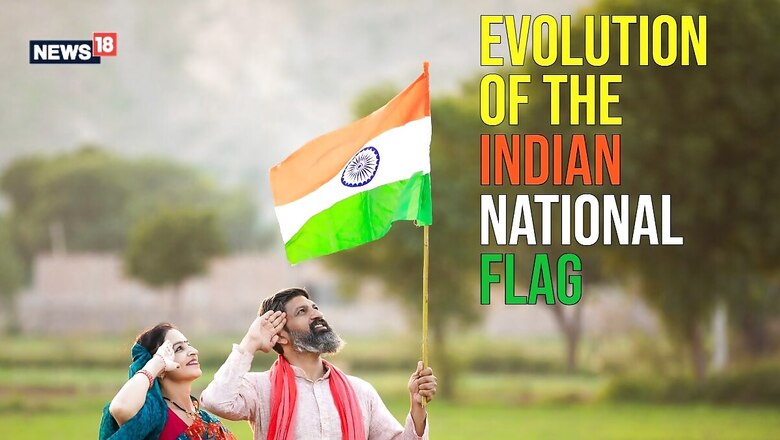
views
This year, the whole country will be celebrating the 78th Independence Day on August 15, 2024, marking 77 years of freedom from colonial British rule. The theme for this year’s Independence Day celebrations is Nation First, Always First as a part of the wider Azadi Ka Amrit Mahotsav celebration.
READ ALSO: Happy Independence Day 2024: Heartfelt Wishes, Quotes, Images, and Greetings to Celebrate India’s 78th Year of Freedom!
The national flag, or the Tiranga, is an important symbol of Indian independence. The national flag is treated with utmost respect in India. Here is a timeline of how the flag evolved into its present form.
History and Evolution of the Indian Flag
The first Indian National flag can be traced to 1906. It appeared during the Swadeshi movement and was hoisted for the first time in the Parsee Bagan Square in Calcutta. The flag had three horizontal strips of red, yellow and green.
WATCH: Evolution Of The Indian National Flag
In 1917, during the Home Rule Movement, Annie Besant and Bal Gangadhar Tilak hoisted another flag. This flag had four alternate red and green horizontal stripes and seven stars put in the saptarishi configuration. A white crescent and star occupied the top right corner, while the left corner had a Union Jack.
In 1921, at the Vijayawada session of Congress, a freedom fighter Pingali Venkaiah, offered a flag to Mahatma Gandhi. This flag consisted of white, green, and red horizontal stripes that represented India’s diverse communities. A spinning wheel was put in the centre, symbolising the idea of swaraj and self-sufficiency.
In 1931 Pingali Vekaiah’s flag was modified. The red was replaced by saffron.
In July 1947, the Constituent Assembly formally adopted a new flag of free India. Pingali Vekaiah’s 1931 flag was modified, with the dharma chakra replacing the spinning wheel. This flag was named Tiranga.
Interesting Facts About the Indian Flag
- The saffron in the national flag represents strength and courage, the white represents peace and truth, and the green stands for growth and prosperity.
- The dharma chakra at the centre of the white band is based on the “wheel of the law” as carved on the Sarnath Lion Capital. It symbolises that there is “life in movement and death in stagnation”.
- The national flag cannot be worn below the waist even if it’s part of any uniform or dress.
- The national flag was designed by freedom fighter and geologist Pingali Venkayya.
- One of the largest Indian flags is hoisted at the Attari-Wagah border crossing. It measures 110 meters in length and 24 meters in width.




















Comments
0 comment